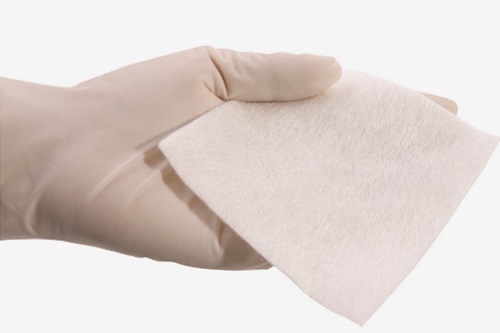Silver wound dressings have emerged as a cornerstone in the management of infected and high-risk wounds due to their broad-spectrum antimicrobial properties, biocompatibility, and ability to reduce biofilm formation.
Chronic wounds, burns, diabetic ulcers, and surgical site infections present persistent challenges in modern medicine. Microbial contamination and biofilm formation can delay wound healing, leading to prolonged hospitalization and increased healthcare costs. Silver, known for its potent antimicrobial properties since antiquity, has re-emerged in advanced wound dressings as a controlled-release antimicrobial agent. Silver-based dressings integrate nanotechnology, polymer science, and materials engineering to achieve sustained ion release, moisture balance, and infection control, making them indispensable in clinical wound management.
Mechanism of Antimicrobial Action
The antimicrobial efficacy of silver is primarily mediated through the release of silver ions (Ag⁺), which act via multiple pathways:
- Cell Membrane Disruption: Silver ions interact with bacterial cell walls and membranes, causing structural destabilization, increased permeability, and eventual cell lysis.
- Protein and Enzyme Inactivation: Ag⁺ binds to thiol (-SH) groups in bacterial enzymes, disrupting vital metabolic pathways including respiratory chain enzymes and DNA replication processes.
- DNA Binding and Replication Inhibition: Silver ions intercalate with bacterial DNA, preventing transcription and replication, effectively halting cell proliferation.
- Reactive Oxygen Species (ROS) Generation: Silver catalyzes ROS formation, leading to oxidative damage of lipids, proteins, and nucleic acids.
- Biofilm Suppression: Silver interferes with quorum sensing and biofilm matrix formation, enhancing susceptibility of bacterial colonies to immune defense and antibiotics.
The cumulative effect of these mechanisms makes silver effective against a wide spectrum of pathogens, including antibiotic-resistant strains such as MRSA and Pseudomonas aeruginosa.
Types of Silver Wound Dressings
Silver-Impregnated Dressings
These incorporate metallic silver particles within fibers (e.g., nylon, polyethylene, cellulose). Ion release occurs upon exposure to wound exudate.
- Advantages: Sustained release, broad antimicrobial range.
- Limitations: Variable ion availability depending on moisture content.
Nanocrystalline Silver Dressings
Composed of a thin nanolayer of metallic silver (~10–100 nm) on a polymer substrate. Nanocrystalline structure ensures controlled, sustained Ag⁺ release.
- Advantages: High surface area, strong antimicrobial efficacy, extended activity.
- Applications: Burns, surgical wounds, and infected ulcers.
Silver Sulfadiazine (SSD) Cream Dressings
A classic formulation where silver ions are complexed with sulfadiazine, a sulfonamide antibiotic.
- Advantages: Effective for burns and large surface wounds.
- Limitations: May delay epithelialization; requires frequent dressing changes.
Silver Alginate and Hydrogel Dressings
Silver is incorporated into alginate (calcium/sodium alginate fibers) or hydrogel matrices to combine antimicrobial action with high absorbency and moisture control.
- Advantages: Ideal for exudative wounds, autolytic debridement support.
- Limitations: Expensive, limited in dry wound environments.
Silver Foam Dressings
These use polyurethane foam infused with silver nanoparticles, offering cushioning, absorption, and microbial protection.
- Advantages: Effective for moderate-to-heavy exudate wounds.
- Applications: Pressure ulcers, venous leg ulcers.
Release Kinetics and Silver Bioavailability
The therapeutic effectiveness of a silver dressing depends on controlled ion release kinetics. Excessive release may cause cytotoxicity to keratinocytes and fibroblasts, while insufficient release may lead to bacterial survival.
Factors Influencing Release:
- pH and ionic strength of wound exudate
- Type and concentration of silver compound (AgNO₃, AgCl, Ag₂O, etc.)
- Dressing porosity and polymer matrix hydrophilicity
- Presence of chloride ions (which can precipitate AgCl)
Modern dressings employ nanocrystalline or composite matrices to achieve a stable release profile in the range of 0.5–2 ppm Ag⁺ — sufficient for antimicrobial action without cellular toxicity.
Clinical Applications
Silver dressings are indicated for:
- Burns: Reduce infection risk and promote healing in second- and third-degree burns.
- Chronic Ulcers: Diabetic, venous, and pressure ulcers with bioburden control.
- Surgical and Traumatic Wounds: Prevention of post-operative infection.
- Graft and Donor Sites: Minimize bacterial colonization.
- Catheter Entry Sites: Reduce biofilm formation in indwelling medical devices.
Clinical studies show that silver dressings can shorten infection duration, reduce odor, and accelerate granulation tissue formation. However, they are typically recommended for short-term use (up to 2 weeks) or until infection resolves.
Technical Challenges and Limitations
Despite their efficacy, several technical and clinical challenges persist:
- Cytotoxicity Risk: Overexposure to silver ions can impair fibroblast migration and epithelialization.
- Resistance Potential: Though rare, bacterial resistance to silver has been documented via efflux pumps and sequestration mechanisms.
- Cost and Access: Silver dressings are more expensive than standard gauze, limiting accessibility in low-resource settings.
- Color Staining: Silver oxide or sulfide formation can cause gray discoloration of skin (argyria) with prolonged use.
- Standardization Issues: Inconsistent ion release profiles among manufacturers complicate clinical comparisons.
Innovations and Future Trends
Recent developments aim to enhance efficacy, safety, and sustainability:
- Nano-engineered Silver Composites: Integration of silver nanoparticles with biopolymers like chitosan or collagen to improve biocompatibility and sustained release.
- Responsive Smart Dressings: pH- or temperature-sensitive systems that modulate Ag⁺ release based on infection status.
- Multimodal Systems: Combining silver with other agents such as honey, growth factors, or oxygen-releasing compounds for synergistic healing effects.
- Green Synthesis of Silver Nanoparticles: Environmentally friendly production using plant extracts or bacterial biosynthesis to reduce chemical toxicity.
- Regenerative Silver Platforms: Hybrid scaffolds coupling silver with stem cell carriers or electrospun fibers for wound tissue regeneration.
Regulatory and Safety Considerations
Silver wound dressings are classified as Class II medical devices under FDA (21 CFR 878.4011) and must comply with ISO 10993 biocompatibility standards.
Key testing parameters include:
- Cytotoxicity, sensitization, and irritation testing
- Antimicrobial efficacy assays (ASTM E2180, ISO 22196)
- Silver ion release quantification (ICP-MS)
- Stability and shelf-life validation
Clinicians must ensure appropriate indication, avoid unnecessary prolonged use, and monitor for allergic or cytotoxic reactions.
Silver wound dressings represent a sophisticated convergence of antimicrobial science, materials engineering, and clinical practice. Their ability to deliver controlled silver ion release while maintaining a moist wound environment has transformed infection management in complex wounds. Continued advancements in nanotechnology, bioresponsive materials, and regulatory standardization will further refine their role in next-generation wound care — balancing efficacy, safety, and tissue compatibility.

